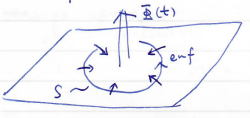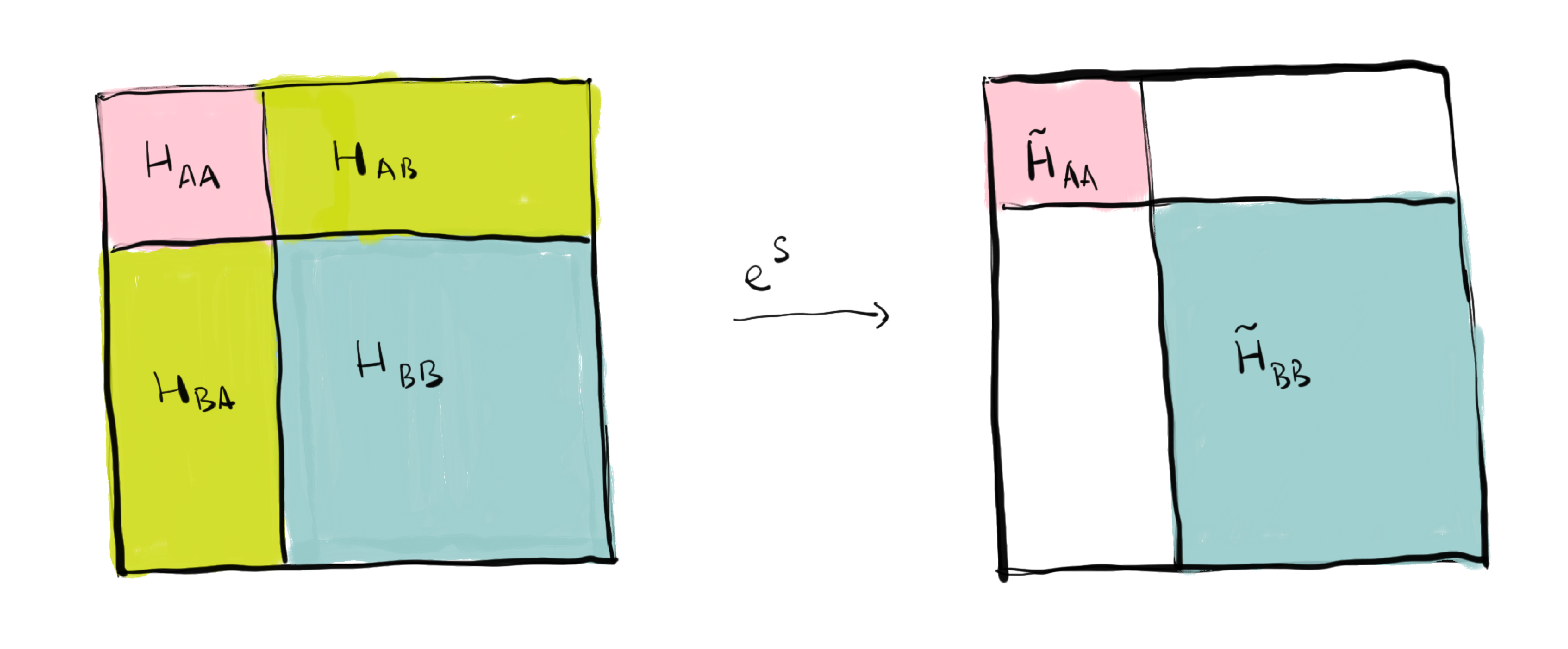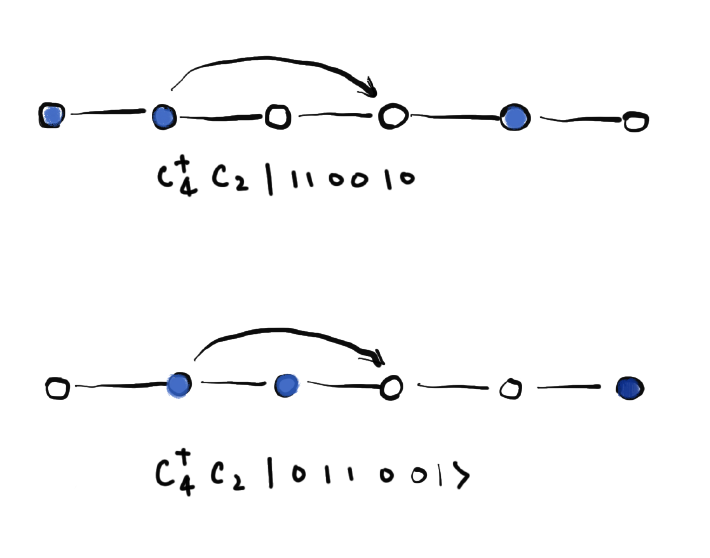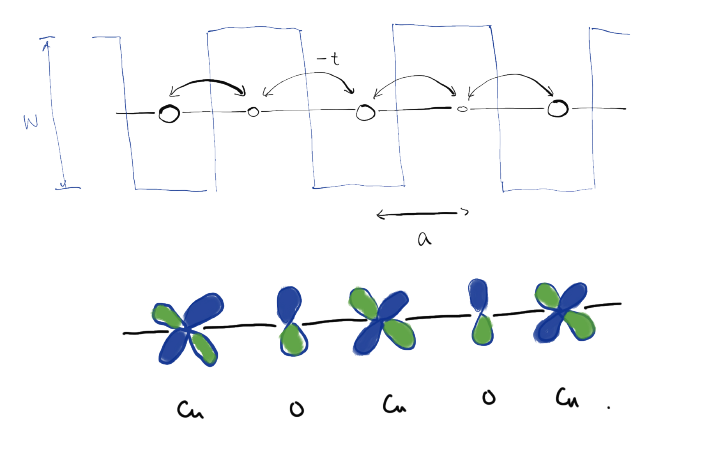Lecture 9
Today
Streda formula
Nearly generate perturbation theory
A review of the tight-binding method
Reading
Lecture notes
Girvin & Yang: 7.4, 7.5, 7.6
1. Streda formula
From the semiclassical equation of motion
We find
So in a system with non-zero Berry curvature, there is change in the Fermi volume under a magnetic field, as
is unchanged.
For an insulator, this leads to curious result. Consider a 2D system, threaded by a magnetic flux

noting
is the charge transported across the boundary. We then find the Streda formula
We find for an insulator at
This is a curious result. That is, an insulator at
2. Nearly degenerate perturbation theory
The degenerate perturbation theory (DPT) is a versatile tool for down-folding Hamiltonian into an effective Hamiltonian valid in a reduced Hilbert space. The DPT also goes by many different names in different contexts, such as the Löwdin perturbation, the Foldy–Wouthuysen transformation in relativistic quantum mechanics, or Fröhlich-Nakajima transformation in electron-phonon coupling, Schrieffer-Wolff transformation in the Kondo problem and quantum optics,1 and so on.
The problem is formulated as follows. If we have a Hamiltonian of the form
where
The typical scenario for the use of the DPT is as follows. The eigenstates of
The trick for doing this is performing a unitary transformation on the Hamiltonian
where

We then expand
Inserting this into Eq.
For a second-order theory, we require that
which is an operator equation in
where
Now the Hamiltonian to second order of perturbation is
When substituted back, this leads to
If the ground states are strictly degenerate
which is precisely Eq. (39.4) in Quantum Mechanics: Non-relativistic theory ( Landau and Lifshitz, Pergamon 1977). For a somewhat elementary and systematic discussion, you may find Zwiebach's notes useful, where the third order results are computed.
Now we have reduced our Hilbert space, at the price of complicating our Hamiltonian with
3. Application: hopping band of a diatomic chain
Now for a monatomic chain, the tight-binding Hamiltonian (or hopping Hamiltonian) is
Note that we have not included spin in this Hamiltonian. We assume that electrons are spinless Fermions, following the Fermi-Dirac distribution2, such that
When acting on the one-particle subspace, Eq.

Figure 1: Compactness of the second-quantized form of the hopping term. The processes shown (and many more) have distinct matrix elements, but are described by the same operator
For
In interacting systems, we get additional terms, which usually involve more than two operators. Usually the fermion number is conserved, so each term has the same number of creation and annihilation operators, but this rule is violated in the BCS mean-field Hamiltonian for superconductivity, which has terms have with two creations or two annihilations. But an ironclad rule is that the number must be even.
Now we consider the Fourier transform of the creation and annihilation operators
where
The anticommutation relation in Eq.
Inserting the expansion into Eq.
where the dispersion relation
is the Fourier transform of the hopping.
In the case of 1D chain with nearest-neighbor hopping only
then we have

Now we consider a diatomic chain, created by making the on-site energies of consecutive atoms alternate. So the Hamiltonian reads
We find that the Hamiltonian in Fourier space is
where we have introduced a pseudospin
with
where
But to grasp it, or to generalize it to a complex geometry, it is best to approach from the complementary limits of weak or strong potential. The
The other limit,
Then
where
Also shown in the figure a one-dimensional cartoon of the alternating copper d orbitals and oxygen p orbitals found in the CuO2 plane of a high-temperature superconductor. In the customary treatment of that system, the oxygen
References and notes